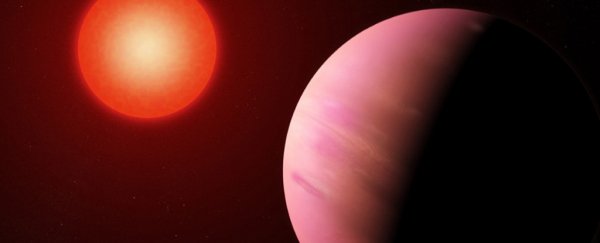Astronomers say they have discovered a planet that's twice the size of Earth and within a zone that could allow liquid water to exist on its surface.
The finding comes from data from NASA's Kepler space telescope, which ran out of fuel in October.
The planet, K2-288Bb, is within its star's habitable zone, which is why liquid water is a possibility.
The astronomers described its size as unusual for an exoplanet, the term for a planet that orbits a star outside our solar system.
Few planets that orbit close to their stars are more than 1.5 times as large as Earth, yet K2-288Bb is estimated to be roughly 1.9 times the size of our planet.
"It's a very exciting discovery due to how it was found, its temperate orbit and because planets of this size seem to be relatively uncommon," Adina Feinstein, a University of Chicago graduate student and the lead author of a paper on the discovery, said in a NASA news release.
According to the NASA release, the planet is half the size of Neptune and could be gas-rich, though it's possible that it is rocky instead. K2-288Bb, in the Taurus constellation, is about 226 light-years away.
The new planet orbits the smaller of two cool stars in the stellar system called K2-288. The dimmer of the stars, which are about 5.1 billion miles apart, is one-third as massive as the Sun, while the brighter one is half the size of the Sun, the NASA release said.
Kepler, which died nine years after launching into space, has discovered more than 2,600 confirmed planets, about 50 of which may be the same size and temperature as Earth.
Data from Kepler has helped scientists determine whether a planet has a solid surface, like Earth, or a gaseous one, like Jupiter. Narrowing the options in that way increases the chance of finding Earth-like planets that may harbour life.
Since Kepler is no longer hunting for planets, NASA is hoping a new space telescope will aid in the search: the Transiting Exoplanet Survey Satellite, which began its two-year mission in April.
Scientists have said it will examine 200,000 nearby stars as it looks for rocky, Earth-size planets.
"We learned from Kepler that there are more planets than stars in our sky, and now TESS will open our eyes to the variety of planets around some of the closest stars," Paul Hertz, the director of NASA's astrophysics division, said in March.
"TESS will cast a wider net than ever before for enigmatic worlds."
This article was originally published by Business Insider.
More from Business Insider:
